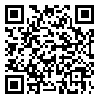Volume 27, Issue 4 (2024)
mjms 2024, 27(4): 45-52 |
Back to browse issues page
Download citation:
BibTeX | RIS | EndNote | Medlars | ProCite | Reference Manager | RefWorks
Send citation to:



BibTeX | RIS | EndNote | Medlars | ProCite | Reference Manager | RefWorks
Send citation to:
Ghanei R, Banaeifar A A, Gorzi A, Arshadi S. The effect of testosterone consumption during resistance training on the expression of some genes related to heart damage of male Wistar rats. mjms 2024; 27 (4) :45-52
URL: http://mjms.modares.ac.ir/article-30-78910-en.html
URL: http://mjms.modares.ac.ir/article-30-78910-en.html
1- Department of Physical Education and Sports Sciences, South Tehran Branch, Islamic Azad University, Tehran, Iran , reyhaneh_ghanei@gmail.com
2- Department of Physical Education and Sports Sciences, Islamic Azad University, South Tehran branch, Tehran, Iran
3- Department of Sport Sciences, University of Zanjan, Zanjan, Iran
4- Department of Physical Education and Sports Sciences, South Tehran Branch, Islamic Azad University, Tehran, Iran
2- Department of Physical Education and Sports Sciences, Islamic Azad University, South Tehran branch, Tehran, Iran
3- Department of Sport Sciences, University of Zanjan, Zanjan, Iran
4- Department of Physical Education and Sports Sciences, South Tehran Branch, Islamic Azad University, Tehran, Iran
Abstract: (467 Views)
Introduction: Many studies have addressed the side effects of anabolic steroid abuse in different tissues such as heart tissue. The purpose of this research is to study the effect of 8 weeks of resistance training and testosterone consumption on some indicators of heart tissue damage in male rats.
Methods: 21 adult male Wistar rats aged 8 weeks (220 ± 10 g) were randomly divided into 3 groups: control, training (resistance training) and training + testosterone groups. The intervention of resistance exercise and testosterone injection lasted for 8 weeks. Resistance exercises were performed 5 times a week in the form of climbing a step ladder with resistance applied by tying a weight to the tail (4 sets, 6 repetitions in each set). Testosterone enanthate was injected intramuscularly 3 days a week (20 mg/kg). One-way ANOVA and Tukey's post hoc test were used to compare variables.
Results: Creatine kinase-MB (CK-MB) expression increased significantly in the training + testosterone compared to the control group (P<0.05). No significant difference was observed in troponin expression between the studied groups (P>0.05).
Conclusion: It seems that testosterone enanthate administration during resistance training leads to cardiac tissue damage in laboratory rats.
Methods: 21 adult male Wistar rats aged 8 weeks (220 ± 10 g) were randomly divided into 3 groups: control, training (resistance training) and training + testosterone groups. The intervention of resistance exercise and testosterone injection lasted for 8 weeks. Resistance exercises were performed 5 times a week in the form of climbing a step ladder with resistance applied by tying a weight to the tail (4 sets, 6 repetitions in each set). Testosterone enanthate was injected intramuscularly 3 days a week (20 mg/kg). One-way ANOVA and Tukey's post hoc test were used to compare variables.
Results: Creatine kinase-MB (CK-MB) expression increased significantly in the training + testosterone compared to the control group (P<0.05). No significant difference was observed in troponin expression between the studied groups (P>0.05).
Conclusion: It seems that testosterone enanthate administration during resistance training leads to cardiac tissue damage in laboratory rats.
Article Type: Original Research |
Subject:
Sport Sciences, Therapy and Medicine
Received: 2025/01/8 | Accepted: 2025/01/20
Received: 2025/01/8 | Accepted: 2025/01/20
Send email to the article author
| Rights and permissions | |
 |
This work is licensed under a Creative Commons Attribution-NonCommercial 4.0 International License. |






